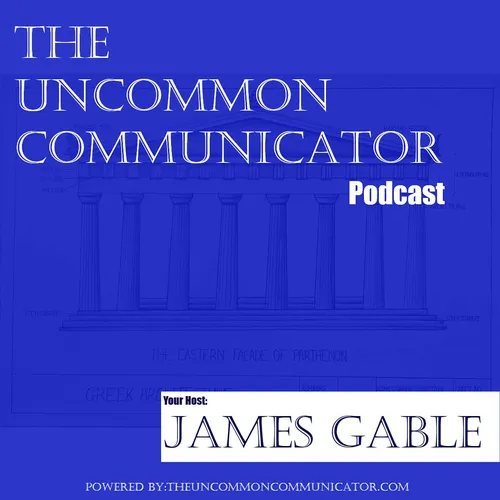Episode 34 - Advertising
- Author
- James Gable, Brandon Thompson
- Published
- Wed 20 Jul 2022
- Episode Link
- None
Welcome to the Uncommon Communicator Podcast. Where we bring enlightenment to the topic of communication.
Advertising is an effective form of communication. Built on the same foundation as we communicate with each other.
1. SOURCE:
- Advertising communication process begins with the sender, who is also called the communicator or the source. A source is an origin or the point at which the message originates in an advertising communication system.
- The person who initiates the communication process is normally referred to as the source. The source or the sender develops ideas, encodes and transfers them to the receiver.
- The source must transmit the message through efficient media that reach the target audience.
- The sender must encode the message in a form that can be understood and then transmit it to the receiver.
- Senders must also develop channels for feedback.
2. MESSAGE:
- Message refers to the content, idea, thought, feeling or the opinion that the sender wants to convey to the receiver.
- It is a key that triggers the recipient, to respond to the sender.
- The sender must ensure that the message conveyed must be clear and specific. The message can be conveyed to the receiver in some ways, like humor or fear.
3. MEDIA:
- Media refers to the various channels or a medium that is used or to be used to convey your message.
- Medium is the means by which a message is transmitted to the receiver.
- The medium may include verbal channels like telephone or a word-of-mouth communication or a non-verbal communication such as e-mail or text messages.
- Each channel has its pros and cons.
- Written communication may be used to convey messages to a small group of people whereas oral or verbal communication means can be chosen to convey messages to a large group of people.
- The channels in the advertising communication system include television, radio, newspapers, magazines, billboards, e-mail, online advertising and so on. The impact and intensity of communication may differ from one media to another.
4. RECEIVER:
- The receiver or the interpreter in an advertising communication system refers to the target audience or the person to whom the message is directed.
- The receiver can be defined in terms of audience segmentation variables like lifestyle, demographics, benefits sought and so on.
- The characteristics of the receiver, his demographics, psychological and social features furnish the foundation for understanding communication process.
- To understand the information from the sender, the receiver must first be able to receive the information and then decode or interpret it.
5. FEEDBACK
- Feedback is a significant element of the communication process, as it empowers the sender to measure the efficiency of the message.
- It enables the sender to analyze the exact interpretation of the message by a decoder.
- The communication process reaches its end goal when the message has been successfully transmitted, received and understood.
- Feedback may be direct, such as a written or oral feedback, or it may also take the form of an action in response.
Follow us on Instagram: Th
YouTube: https://www.youtube.com/channel/UCOJqHEhS1CtX3A4nztIBzdA
Instagram: The_Uncommon_Communicator
TikTok https://www.tiktok.com/@theuncommoncommunicator
Facebook: The Uncommon Communicator
LinkedIn :https://www.linkedin.com/company/80960291/
Website : theuncommoncommunicator.com
